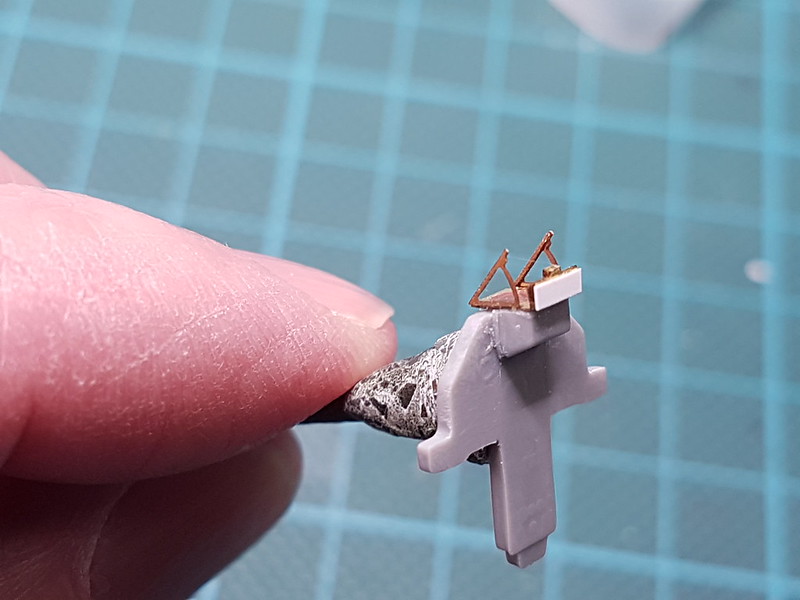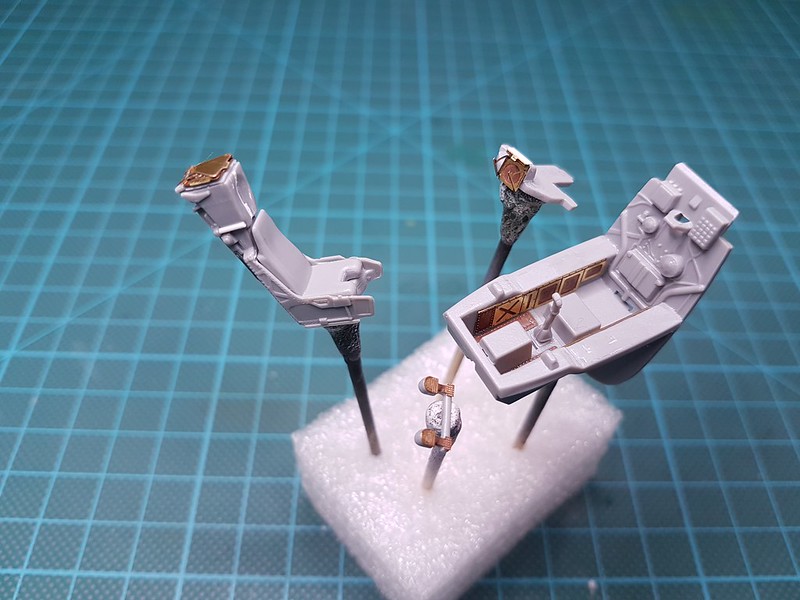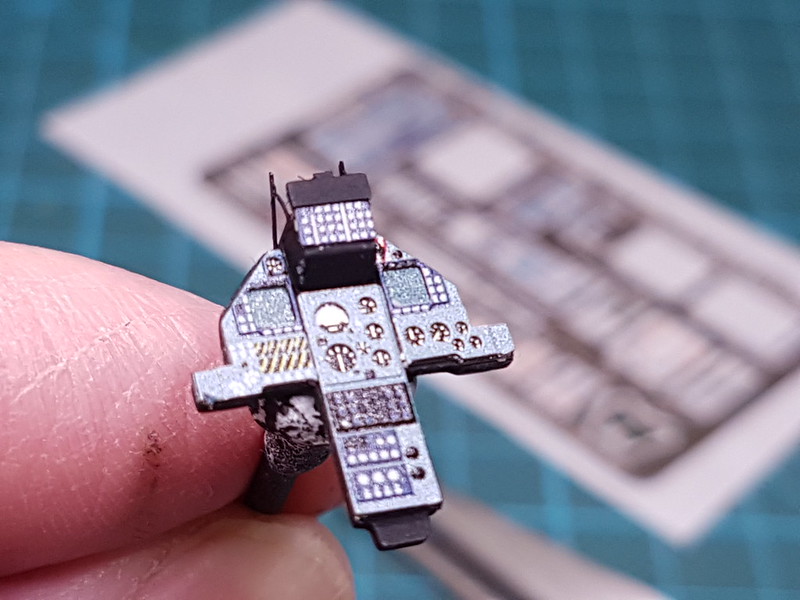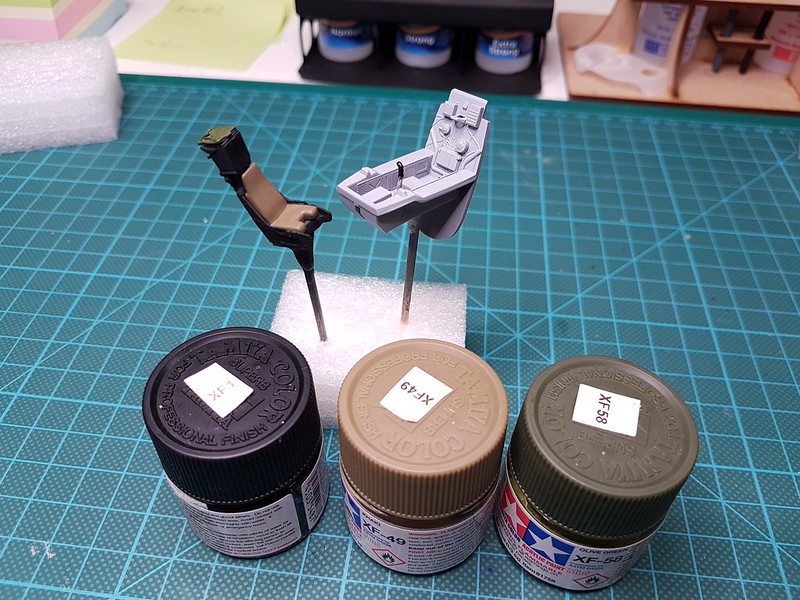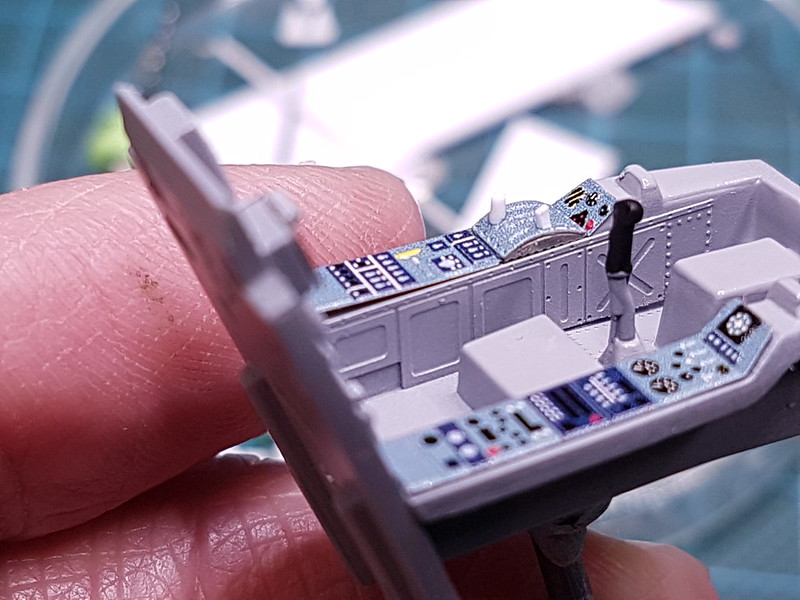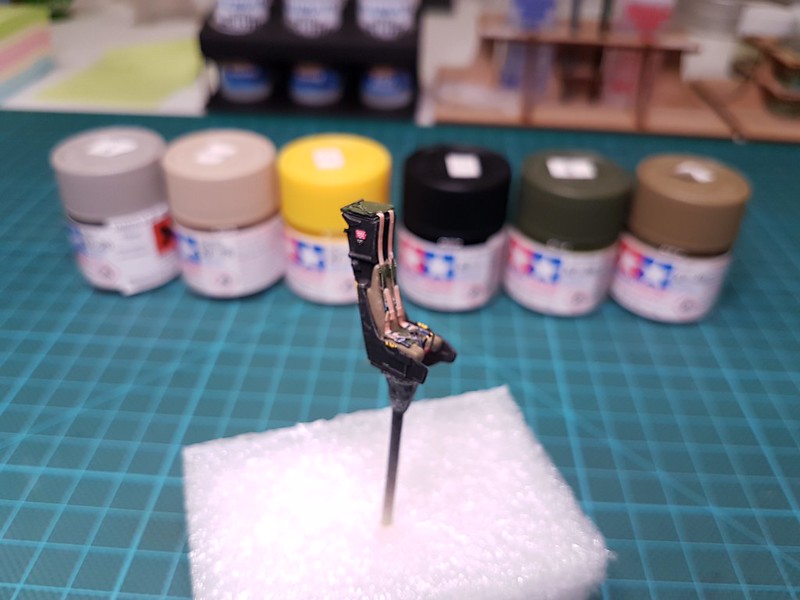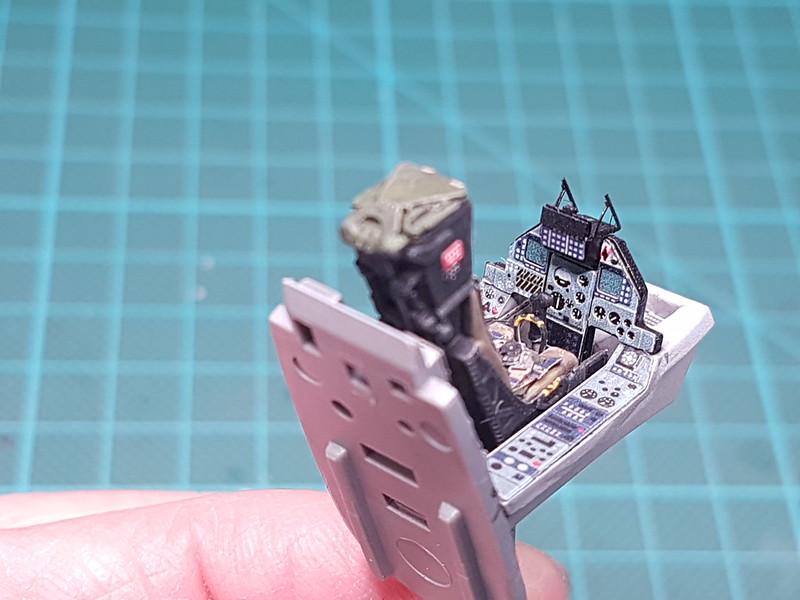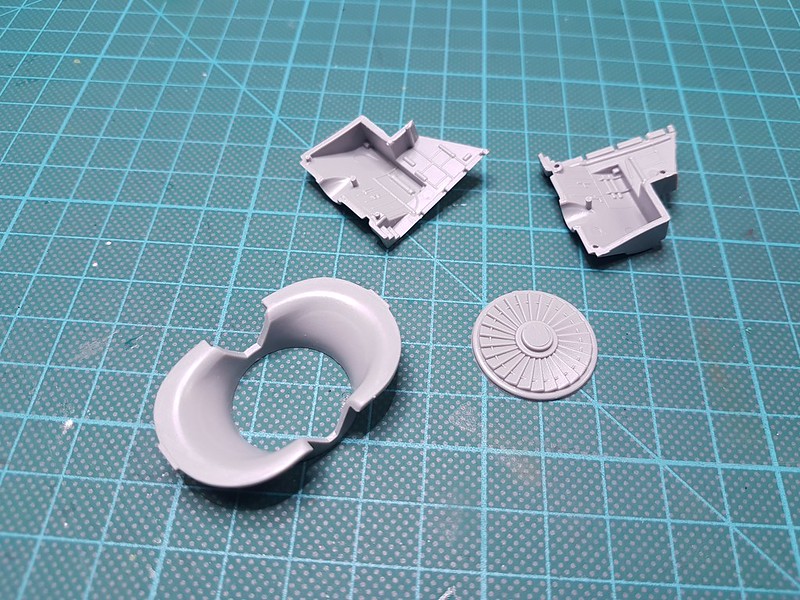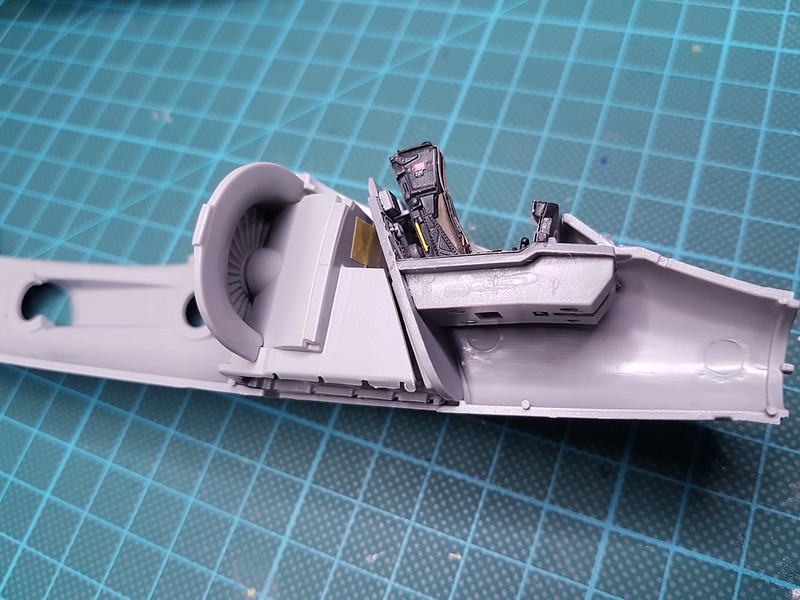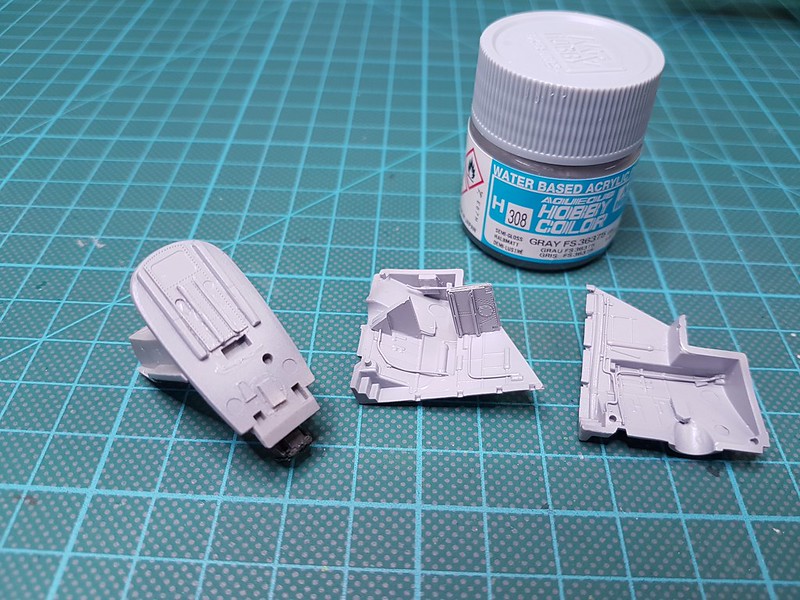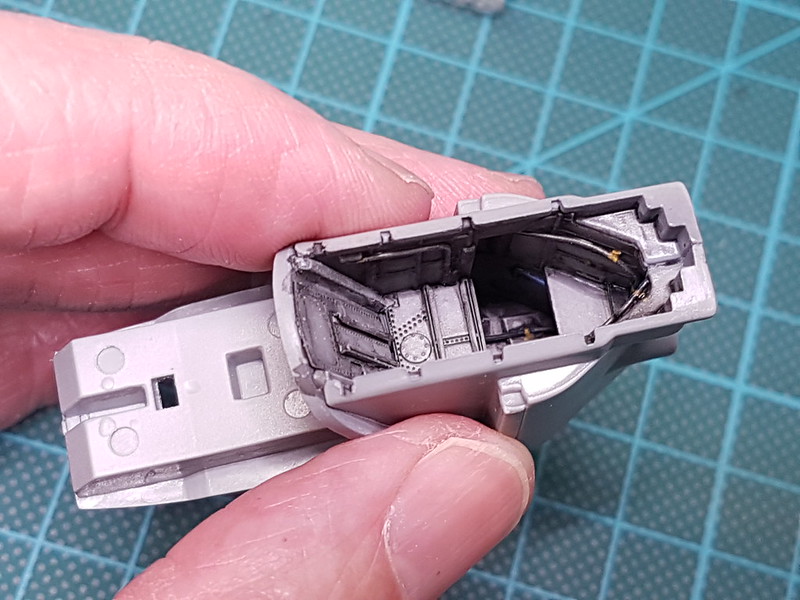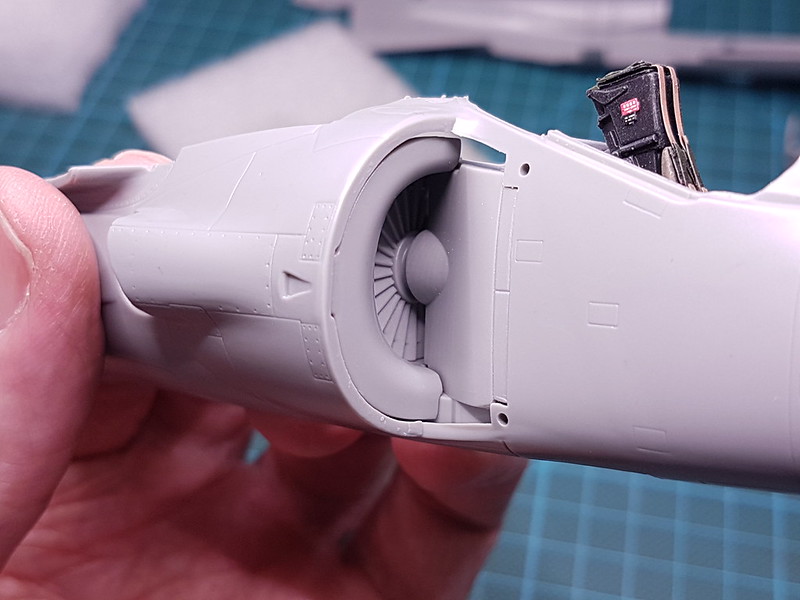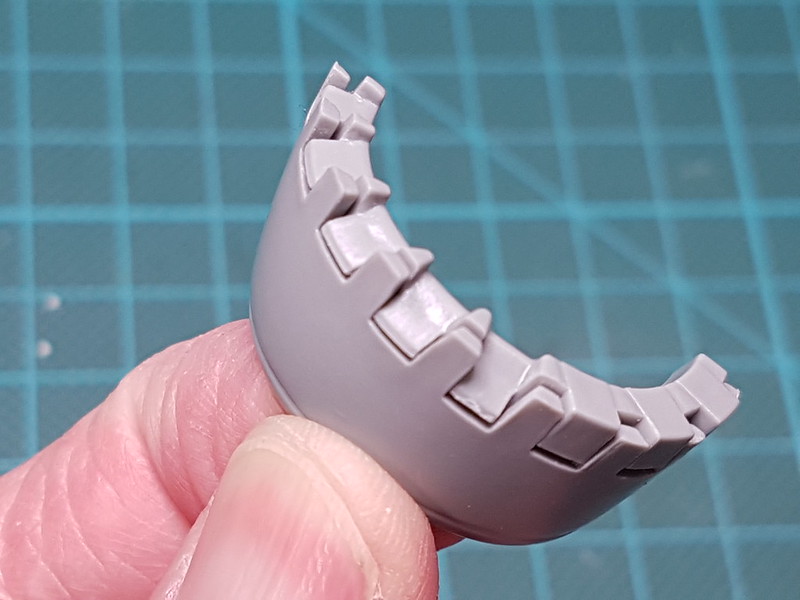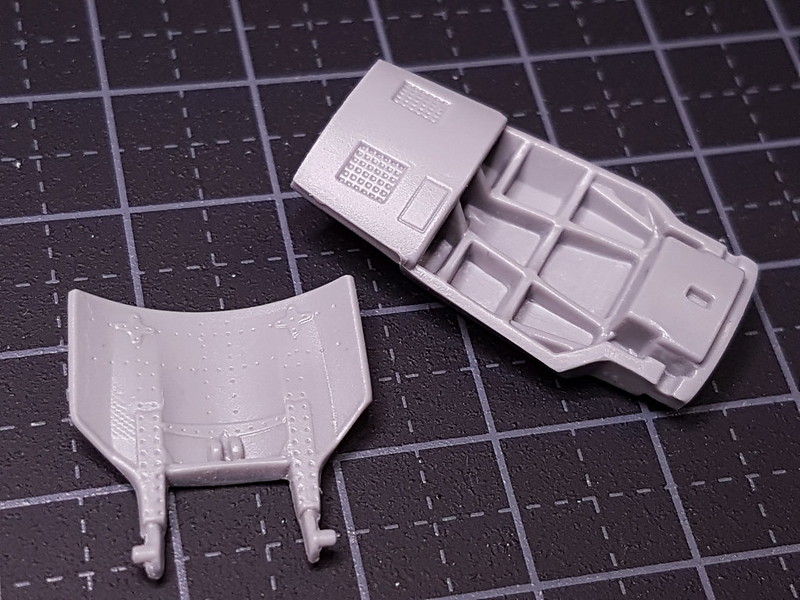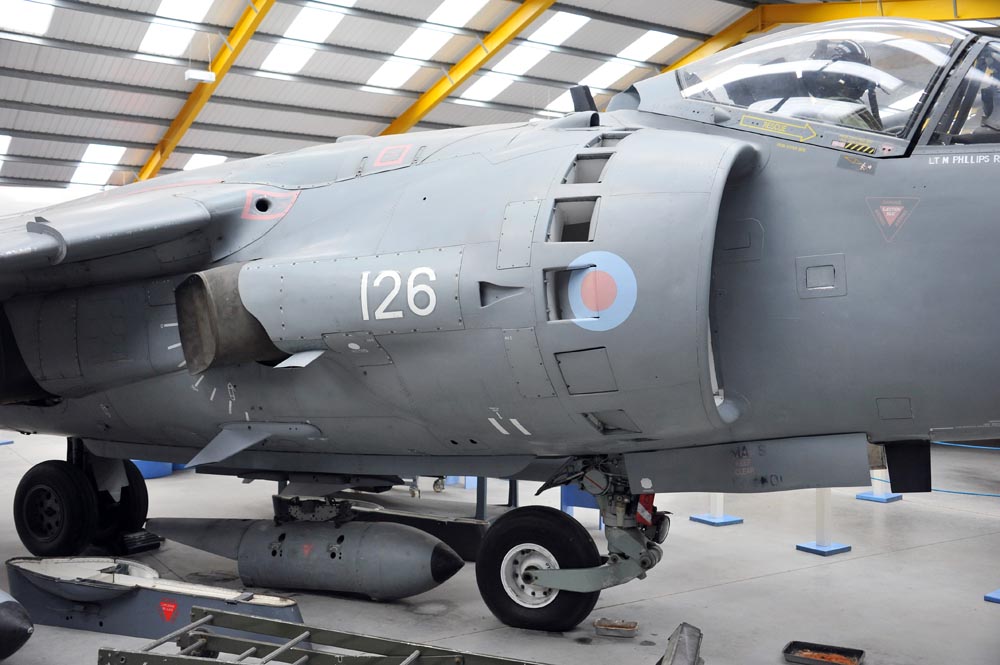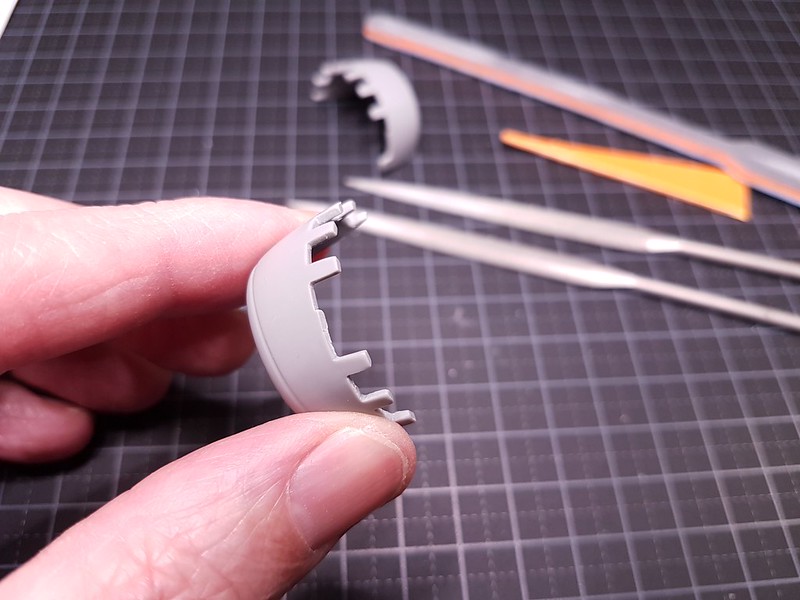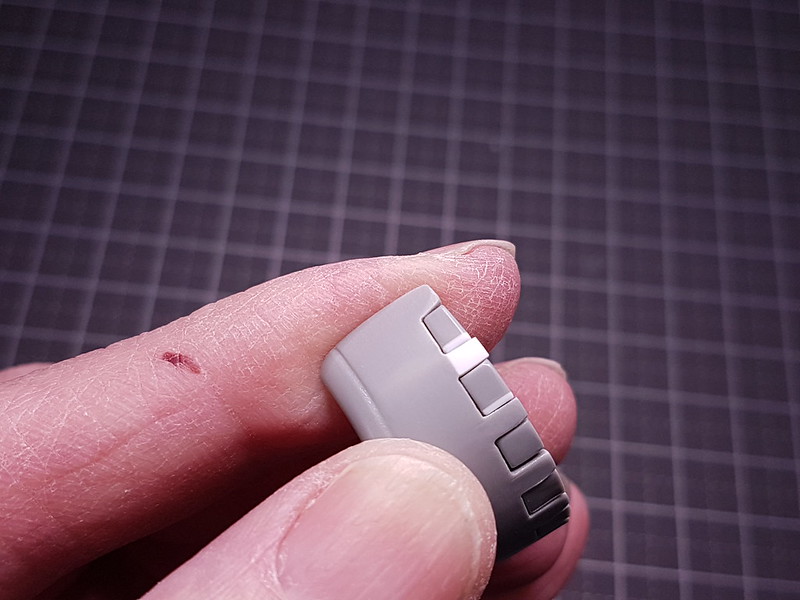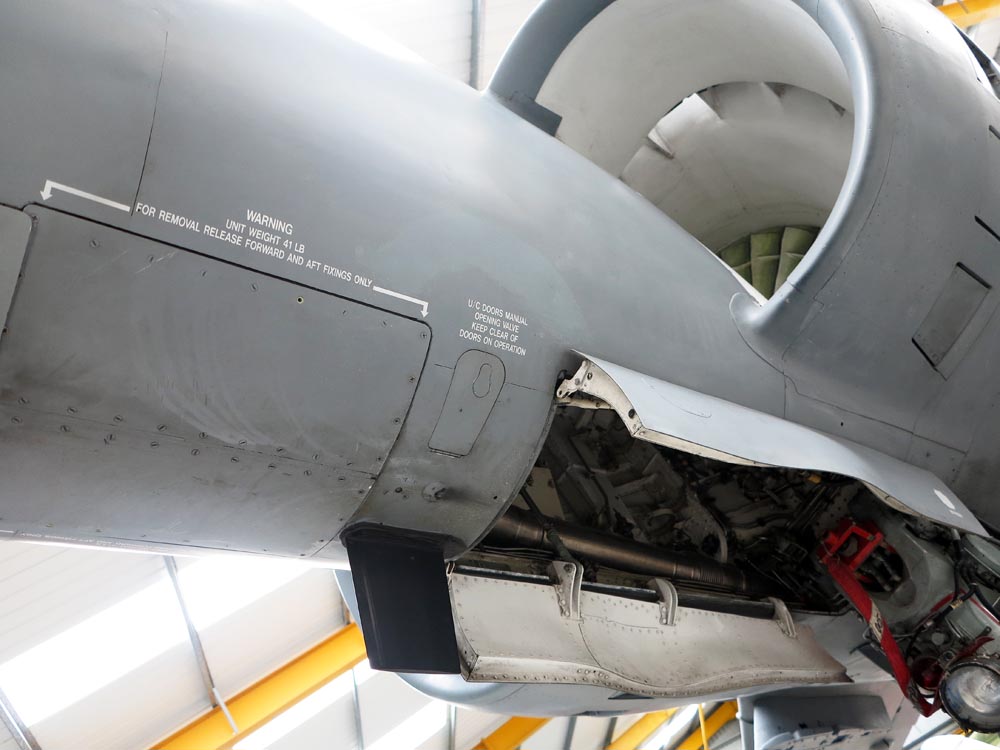I finally made up my mind of what to build - I was first thinking of a Swedish HKP4 (Vertol 107/CH-46) but I went for a jumpjet instead
So... I don't think this aircraft needs any presentation really, but here's a short intro anyway
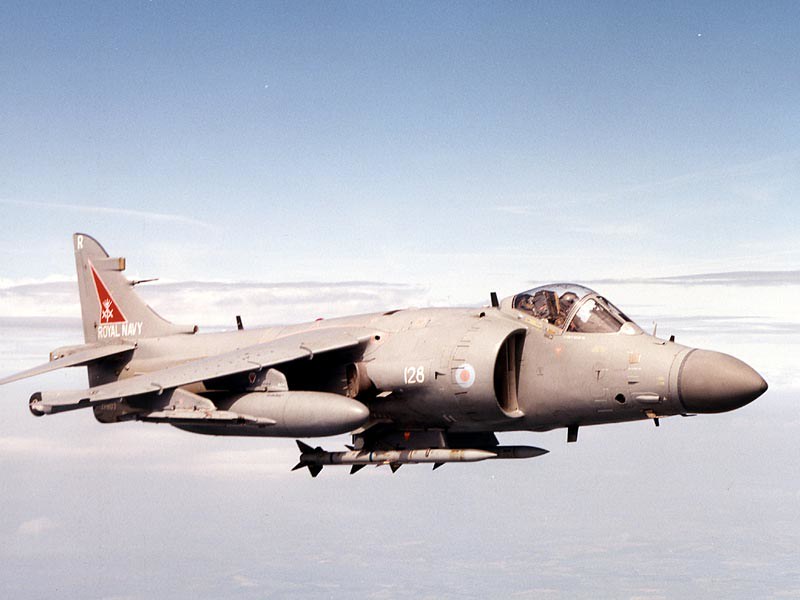
The British Aerospace Sea Harrier is a naval short take-off and vertical landing/vertical take-off and landing jet fighter, reconnaissance and attack aircraft; the second member of the Harrier Jump Jet family developed. It first entered service with the Royal Navy in April 1980 as the Sea Harrier FRS1 and became informally known as the "Shar". Unusual in an era in which most naval and land-based air superiority fighters were large and supersonic, the principal role of the subsonic Sea Harrier was to provide air defence for Royal Navy task groups centred around the aircraft carriers.
The Sea Harrier served in the Falklands War, and the Balkans conflicts; on all occasions it mainly operated from aircraft carriers positioned within the conflict zone. Its usage in the Falklands War was its most high profile and important success, when it was the only fixed-wing fighter available to protect the British Task Force. The Sea Harriers shot down 20 enemy aircraft during the conflict; 2 Sea Harriers were lost to enemy ground fire. They were also used to launch ground attacks in the same manner as the Harriers operated by the Royal Air Force.
The Sea Harrier was marketed for sales abroad, but by 1983 India was the only operator other than Britain after attempts to sell the aircraft to Argentina and Australia were unsuccessful. A second, updated version for the Royal Navy was made in 1993 as the Sea Harrier FA2, improving its air-to-air abilities and weapons compatibilities, along with a more powerful engine; this version continued manufacture until 1998. The aircraft was withdrawn from service early by the Royal Navy in 2006. The Sea Harrier remained in service for a further decade with the Indian Navy until its retirement in 2016.
Specifications (Sea Harrier FA2):
General characteristics:
Crew: 1
Length: 46 ft 6 in (14.2 m)
Wingspan: 25 ft 3 in (7.6 m)
Height: 12 ft 2 in (3.71 m)
Wing area: 201.1 ft² (18.68 m²)
Empty weight: 14,052 lb (6,374 kg)
Max. takeoff weight: 26,200 lb (11,900 kg)
Powerplant: 1 × Rolls-Royce Pegasus turbofan, 21,500 lbf (95.64 kN)
Performance:
Maximum speed: 635 knots (735 mph, 1,182 km/h)
Combat radius: 540 nmi (620 mi, 1,000 km)
Ferry range: 1,740 nmi (2,000 mi, 3,600 km)
Service ceiling: 51,000 ft (16,000 m)
Rate of climb: 50,000 ft/min (250 m/s)
Armament:
Guns: 2× 30 mm (1.18 in) ADEN cannon pods under the fuselage, with 130 rounds each
Hardpoints: 4× under-wing pylon stations, and 1 fuselage pylon on centerline plus 2 attach points for gun pods with a total capability of 8,000 lb (3,630 kg) of payload.
Rockets: 4× Matra rocket pods with 18 SNEB 68 mm rockets each
Missiles:
Air-to-air missiles:
AIM-9 Sidewinder
AIM-120 AMRAAM
R550 Magic (Sea Harrier FRS51)
Air-to-surface missile:
ALARM anti-radiation missile (ARM)
Martel missile ARM
Anti-ship missiles:
Sea Eagle
Bombs:
A variety of unguided iron bombs (including 3 kg and 14 kg practice bombs).
WE.177A
Others:
reconnaissance pods or
2× auxiliary drop tanks for ferry flight or extended range/loitering time
Avionics
Ferranti Blue Vixen all-weather airborne radar
BAE Systems AD2770 Tactical Air Navigation System
Thales MADGE Microwave Airborne Digital Guidance Equipment
Allied Signal AN/APX-100 mk12 IFF
The kit looks like this:
Boxart

Clear parts, Photoetch and a massive decal-sheet
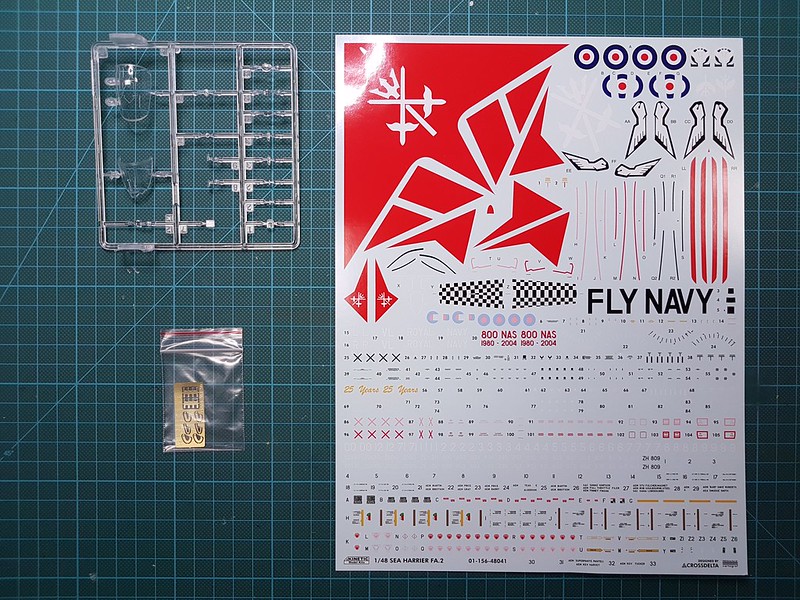
Assembly instructions
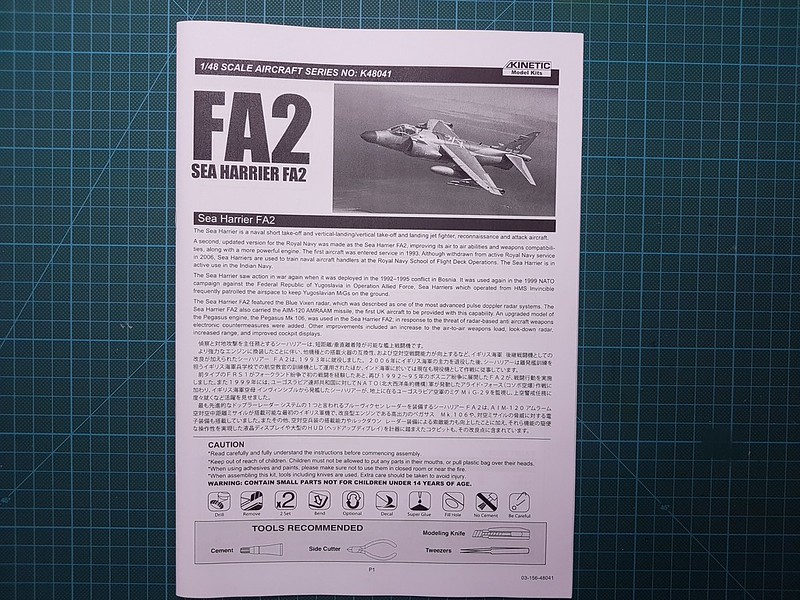
Sprues

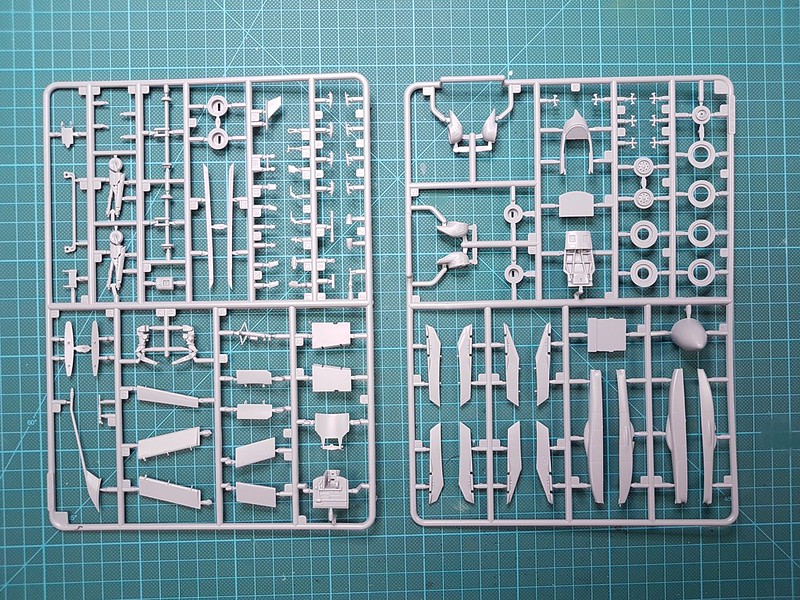


And some aftermarket goodies

Tommy






















